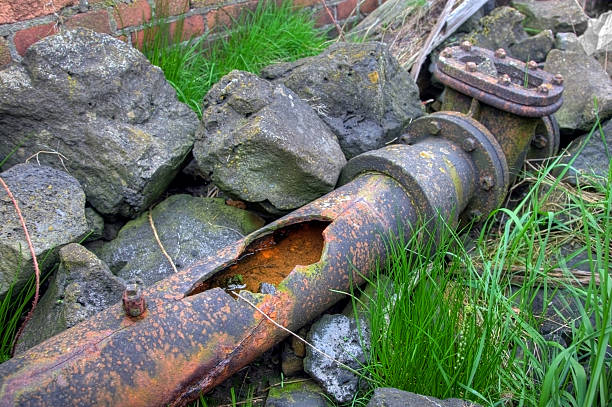Aggressive Index

Parameter Type: Drinking Water Testing for Volatiles
Parameter Name: Aggressive Index
What it is and Where it Comes From:
The Aggressive Index (AI) is a part of Standard C-400 established by the American Water Works Association (AWWA). It relates to the corrosive tendency of water and to its effect on asbestos cement pipe. This corrosion index uses a formula that is calculated from the water’s pH – whether the water is more acidic or more alkaline, the water’s hardness, or how much calcium the water contains, and the alkalinity of the water. Where it is applicable, the aggressive index (AI) is simpler and more convenient than the Langelier Index (LI). Aggressive index (AI) is a calculation with no units of measurement. An aggressive index (AI) of 10.0 à 11.9 is considered moderately aggressive. An aggressive index (AI) of 12.0 or more is considered non-aggressive. An aggressive index (AI) of <10.0 is considered extremely aggressive (corrosive). Because the aggressive index (AI) does not include the effects of temperature or dissolved solids, it is less accurate as an analytical tool than the LI. Drinking water testing gives you several benefits like peace of mind, identifying contaminants in your water, and insight into health concerns. Safe Home offers Laboratory drinking water testing kits for aggressive Index (AI), allowing you to collect your water sample and ship it directly to our EPA-Certified Laboratory. This platform of drinking water testing for aggressive index will give you an accurate level based on the lowest level of a parameter our instruments can detect (Method Detection Level). Safe Home drinking water testing for physical properties can be used for city and well water supplies. Drinking water testing should be done any time you notice a significant change in your water quality.
Health Effects:
Corrosive water itself does not pose a health threat when consumed. However, corrosive water may dissolve enough metals to create water that is unsafe for consumption. Therefore, drinking water testing is great for monitoring contaminates in your water system. In metal plumbing, copper and lead may be a health concern. Copper in drinking water may cause both aesthetic (as mentioned above) and health-related problems. Excess copper in the human body can cause stomach and intestinal distress such as nausea, vomiting, diarrhea, stomach cramps, and system failure. The lowest level at which these adverse effects occur has not been well defined. People with Wilson’s Disease, a rare genetic disorder, are more sensitive to the effects of copper. Lead is another metal in the news that is of great concern as a result of aggressive/corrosive water, which leaches this metal from pipes and plumbing fixtures, into the water being used for drinking, bathing and cooking purposes.
Solutions to Contaminant Levels:
You have completed the drinking water testing process, what are the next steps? There are a few methods that can be used to solve corrosive water problems. Some of these methods include replacement of the household plumbing system, water treatment systems that make the water non-corrosive, or reducing/removing the by-products of corrosive water, for example lead and copper. How can I clean my pipes? Cleaning your pipes at home is an option that many people use. This is especially effective when dealing with mineral and calcium build-up that is on the surface of your pipes (not too deep within your piping system). Here is one good remedy. Remove any freestanding water that is still left behind. Pour 1 gallon of distilled white vinegar down the drain. Allow the vinegar to loosen up the calcium for 30 minutes. Use a long-handled scrub brush (preferably plastic) to scrub out as much of the buildup as possible. Vinegar will help to remove the calcium build-up by allowing the acid to melt it down. If you have signs of hard water, it is recommended to do this once a month; or until signs of build-up appear. Who do I need to contact to find out more information about water quality in my area? Every community water supplier must provide an annual report to its customers, known as a Consumer Confidence Report (CCR). The report provides information on your local drinking water quality, including the water’s source, contaminants found in the water, and how consumers can get involved in protecting drinking water. How often does the local public water system preform drinking water testing? Frequency of drinking water testing depends on the number of people served, the type of water source, and types of contaminants. Certain contaminants are tested more frequently than others, as established by the Safe Drinking Water Act. You can find out about levels of regulated contaminants in your treated water for the previous calendar year in your annual Consumer Confidence Report (CCR).


